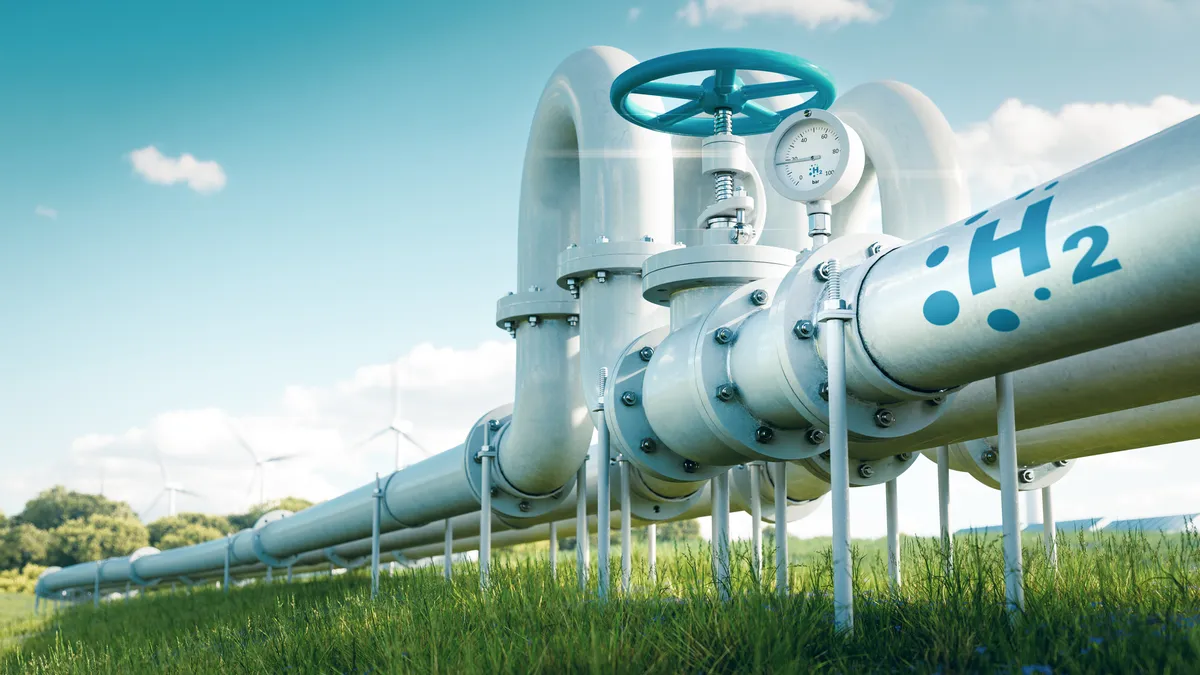Zane McDonald is the executive director of the Open Hydrogen Initiative.
With the comment period officially closed for the hydrogen production tax credit, known as 45V, all eyes are on the U.S. Treasury Department, which holds the pen on the finalized rules that will dictate how hydrogen producers qualify for the credit. Where the final rules land will dictate whether this tax credit serves as a catalyst to jump-start a nascent clean energy industry, or if it falls short of the promise of the Inflation Reduction Act.
In December, Treasury published draft rules that unfortunately create hurdles for some hydrogen production methods and actually disincentivize clean hydrogen production in others. One of those troubling areas involves hydrogen produced from natural gas with carbon capture technology.
As written, the draft rules propose to limit hydrogen producers’ ability to provide project-specific information, such as from upstream emissions data, in the calculation of hydrogen’s carbon intensity. Instead, this data set will be uniform for all producers, using a national average. Because eligibility for 45V is based on the carbon intensity of the hydrogen produced, using this national average rather than the actual upstream emissions means the federal government would potentially be rewarding dirtier natural gas production while discouraging others to clean up their operations.
Enhancing data customization in Treasury’s final guidance is not only essential but would provide a fair and accurate representation of emissions profiles of hydrogen produced in the United States.
Further, we need all players at the table when it comes to jump-starting the U.S. hydrogen industry. To reach the national goal set out by the Department of Energy to increase annual clean hydrogen production from 10 million to 50 million metric tons between 2030 and 2050, multiple production pathways and feedstocks, such as municipal solid waste, renewable natural gas, liquified natural gas and woody biomass, must be included in Treasury’s guidance.
Treasury’s guidance also omitted various commercially viable hydrogen production technologies and oversimplified categorizing electrolysis — a process of splitting water into hydrogen and oxygen — into only two technologies, low temperature and high temperature. Preliminary research by Open Hydrogen Initiative found that four predominately utilized electrolytic chemistries can produce hydrogen that varies in carbon intensity by over 30% under identical assumptions. Using broad categories in lieu of specific technologies once again erodes the accuracy and integrity of hydrogen’s lifecycle assessment.
With these rules, Treasury’s goal should be to create a harmonized methodology to determine the carbon intensity of hydrogen production at the facility level. To do so, high-quality data is nonnegotiable, and we must ask hydrogen producers to supply it if they wish to qualify for the tax credit.
Additionally, technical and methodological assumptions used when calculating carbon intensity should be made easily accessible to increase industry confidence, encourage collaborative participation from the energy community and spur constant technological innovation for long-term improvements.
Building a resilient, low-carbon hydrogen economy requires substantial public-private collaboration. Stakeholders from the hydrogen and broader energy communities should be actively engaged in refining and expanding future hydrogen policies. Policymakers can mitigate uncertainty and ensure high-quality data and model assumptions through comprehensive stakeholder engagement in the development of future hydrogen policy support.
While the 45V tax credit was intended to accelerate the adoption of clean energy solutions to achieve our nation’s climate goals, the effectiveness of the provision is at risk if requirements are both impractical and exclude viable tax credit candidates unnecessarily.
As Treasury takes into account input across the hydrogen value chain and the many stakeholders with a vested interest in this technology, the final guidance needs to be workable to foster a scalable and robust, low-carbon hydrogen economy.














